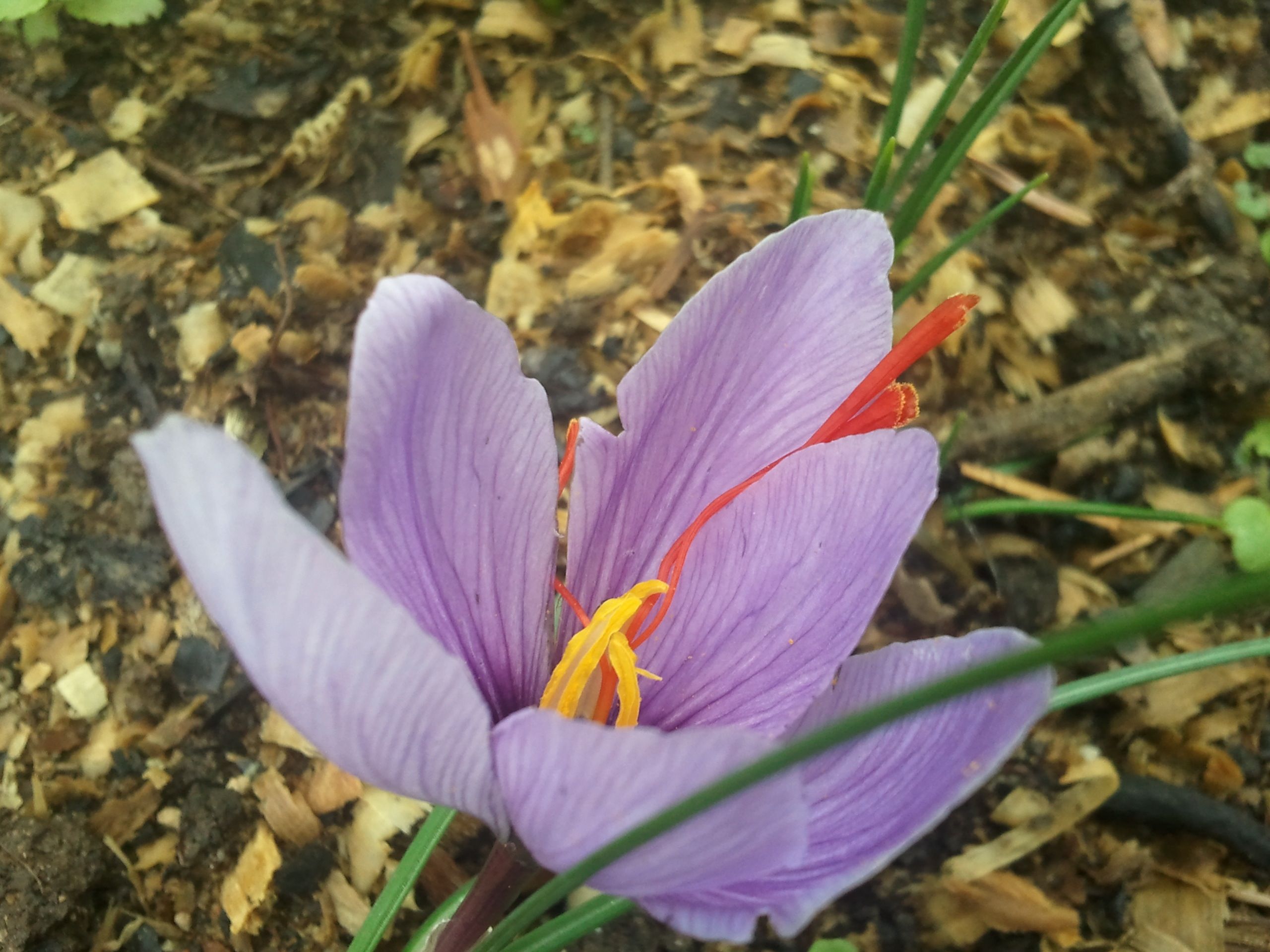SAFFRON
I- Nomenclature
Latin name: Crocus sativus
Family : Iridaceae
Common names: Saffron, saffron crocus, autumn crocus
Etymology
from the Latin "safranum", which comes from the Arabic "asfar": means "yellow".
II- Legends and traditions
Mythology: Crocus, a young and handsome man, follows the nymph Smilax in the woods near Athens. During their short period of idyllic love, Smilax is under the spell of his advances, then begins to tire of his attentions. As Crocus insists despite his reluctance, she comes to bewitch him, transforming the young Crocus into a saffron flower, his blazing orange stigmas symbolizing his immortal passion for Smilax.
History: The Greeks and Romans appreciate saffron for its use as a perfume and deodorant. They spread it in public spaces such as halls and royal courtyards or amphitheatres.
III- Botanical description
Description: Perennial plant of 10-30 cm, glabrescent, with a fairly large subglobose bulb Leaves emerging with flowers, 6-10, erect, a little rough and ciliate at the edges The flowers are composed of androeciums with three stamens loaded with pollen and a threadlike pistil dividing into three bright red trifurcated, serrated and pleated stigmas, 3 to 4.5cm long.
Habitat: of oriental origin, cultivated in Greece, India, Spain and Iran. Parts used: flower pistils
Culture: in the ground or in pots, saffron adapts to varied climates, withstanding - 10 ° C, it will however thrive better in sunny climate with regular watering and weeding
Harvest: from late September to November, pick the flowers at the base, after the dew has evaporated, but before they hatch
Drying : gently detach the red pistils from the base of the flower using a scissor. Dry them at a temperature between 35 ° and 50 ° C, in an electric oven, wood or in the sun, the quality of the saffron will depend on the drying conditions. The saffron should lose 80% of its initial weight.
IV- Active ingredients
|
Pistil |
|
• Essential oil: safranol, monoterpene, beta-pinene and 1.8-cineole • carotenoids: crocin. • heteropolysaccharides including pectin and starch.
|
V- Therapeutic uses
Properties
|
Pistil |
|
• Antispasmodic • analgesic and anti-inflammatory • anti-oxidant • rules regulator • gastric sedative and tonic • sedative and tonic for the nervous system |
Indications
Stomach cramps, digestive disorders, lack of appetite; asthma, cough, bronchitis; painful periods and lower back pain; teething disorders: sore gums increase the capacity for learning (senile dementias in particular) and improve the symptoms of early-stage Alzheimer's disease.
Dosage
Infusion: 15g for a liter of water. Boil and infuse for 15 minutes. 1 to 3 cups per day.
Powder: 0.50 to 1g per day.
Mother tincture: 10 to 20 drops every two hours.
Mouthwash tincture: gum friction.
VI- Precaution of use
Contraindication
toxic in high doses.
Unintended effects: may cause nausea, vomiting, hematuria, dizziness, nosebleeds, uterine hemorrhages. Colors the skin yellow.
Warning: lethal dose: 20 grams; abortion dose: 10 grams


